How Fire Management Supports Biodiversity at NHBP
Fire management is not a modern innovation for Native American communities. NHBP continues this time-honored process into the modern era on its lands to support biodiversity.
This commitment to nurturing the environment while leveraging traditional practices was demonstrated, in March when the NHBP Environmental Department and Athens Fire Department collaborated on a project that entailed prescribed burns on two sections of the Q Drive Prairies Reserve.
A prescribed burn involves experts intentionally setting fire to a designated area under controlled conditions to manage land. NHBP utilizes prescribed burns as a habitat restoration management practice.
Prescribed burns are a multi-faceted tool in land management and conservation, particularly in regions like Michigan’s forests and grasslands. These controlled fires are strategically employed to foster healthier, more resilient natural landscapes and ensure the maintenance of healthy, vibrant ecosystems that support a wide range of plant and animal species.

Historically, fire has played a central role in prairie ecosystems, largely thanks to the deliberate and knowledgeable use by Native Americans. The cultural significance of fire among Native communities underscores its longstanding relationship with prairie landscapes. For thousands of years, the combination of natural elements like drought and lightning, along with Indigenous fire practices, have been critical in sustaining these habitats.
Today at NHBP, the planning and execution of every prescribed burn is a meticulous process overseen by the Environmental Department. The first step is to evaluate the area and devise a comprehensive plan aimed at achieving specific ecological goals.
Central to the orchestration of these prescribed burns is NHBP Habitat Restoration Specialist Steve Allen. Serving as the Prairie Habitat/Consulting Biologist for the NHBP Environmental Department, Allen plays a pivotal role in the success of these ecological efforts. His expertise and dedication have established him as the mastermind behind the coordination and execution of all fire-related activities, particularly those impacting habitats.
“During the development of this particular fire management plan, special considerations were made to align with the hibernation patterns of box turtles to prevent any disturbance to their population,” said Allen. “The designated burn area is a known habitat for a family of box turtles.”
This prescribed burn aimed to enhance this habitat encouraging the growth of lush, thick grass for the turtles to create burrows.
These terrestrial creatures prefer spending most of their time on land, only venturing into the water to cool off during hot summer days or for travel.
By implementing the prescribed burn while the turtles were hibernating, the plan aimed to minimize the impact on this resilient yet sensitive species, ensuring their habitat remains a sanctuary for their continued survival and prosperity.
Once the planning phase is complete, the responsibility for conducting the prescribed burn shifts to the Athens Fire Department to ensure that the burn is carried out safely and effectively.
Also on hand to assist was NHBP Skilled Maintenance Technician Nate Walker, who played a dual role as he also serves as a Captain of the Athens Fire Department.
“The working relationship between NHBP and the fire department is extremely functional and beneficial,” said Allen. “We’ve had a really good working relationship with them for over ten years now, and they assist us with all prescribed burns.”
The partnership is mutually beneficial since it also allows the fire department to practice with their wildlife burning gear and offers a chance to train their volunteers.
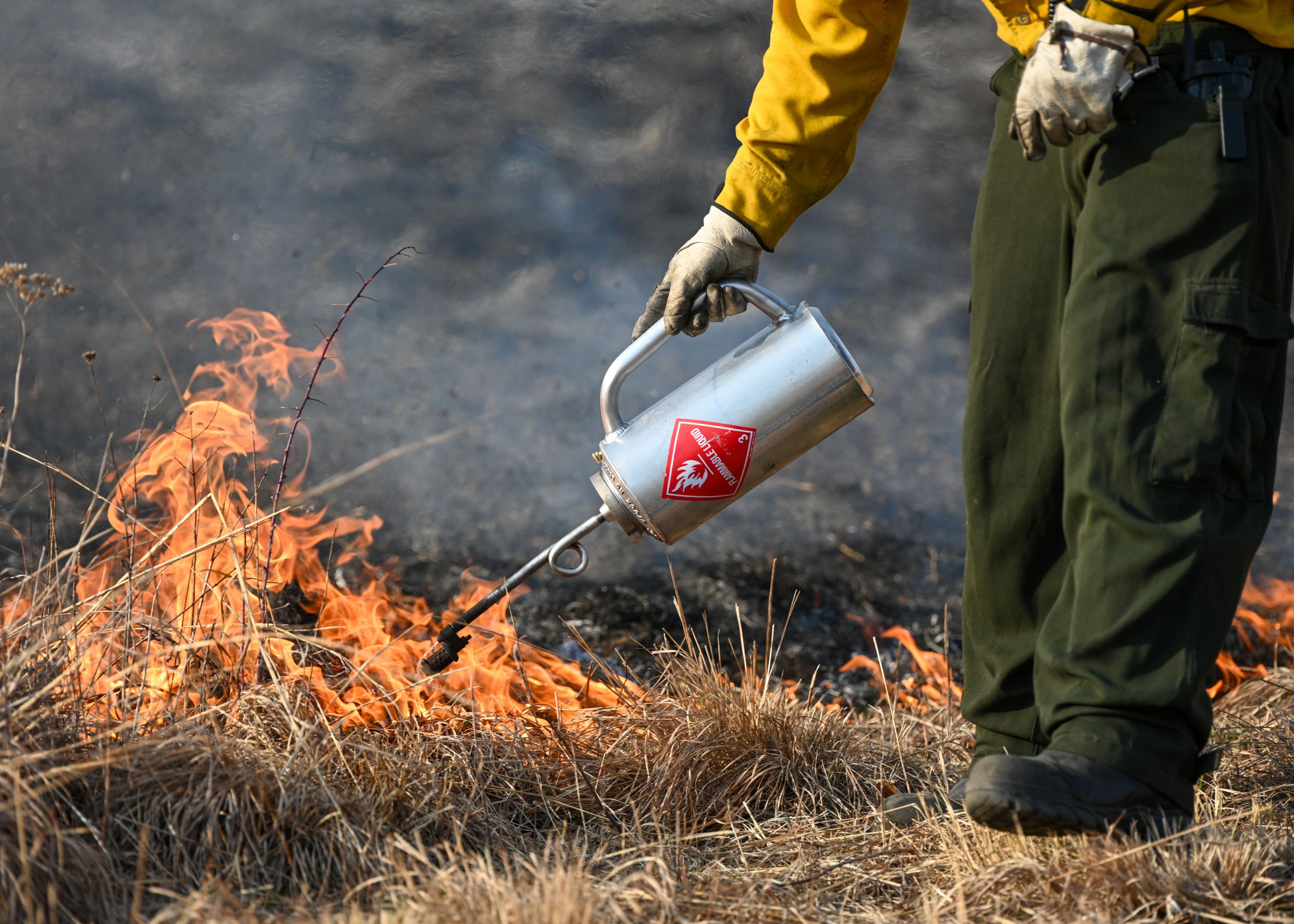
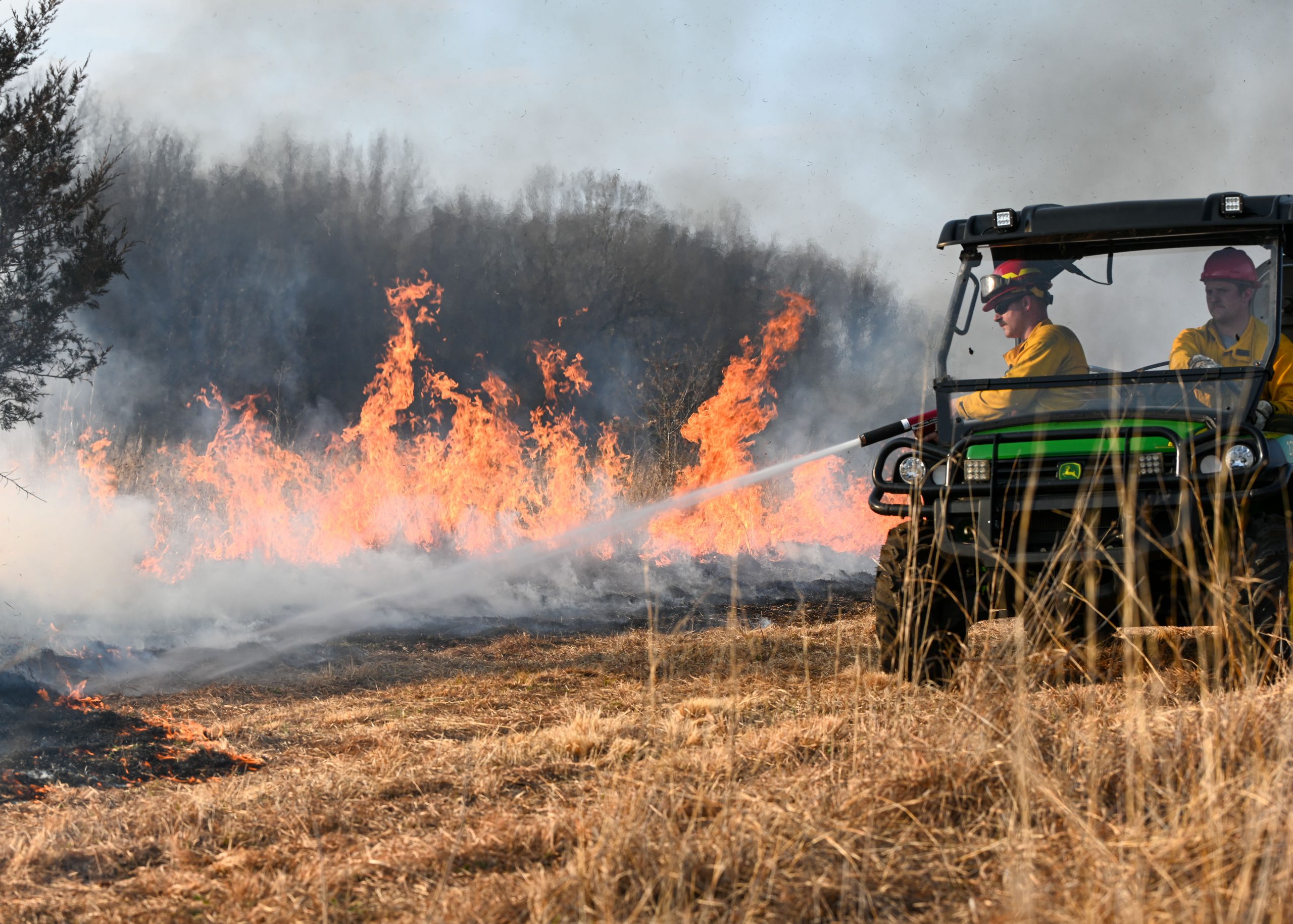
“Within the parameters of the Q Drive Prairie, you can find several different types of habitats,” said Allen. “The southern portion is a restricted tall grass prairie, and the northern portion is a prairie savannah, meaning that this section has more trees.”
During a prescribed burn, the whole property isn’t set on fire simultaneously, in order to protect the insects and wildlife residing in the region. The Q Drive Prairies are divided up into six sections. Therefore, they rotate the areas being burned each year.
The optimal time for conducting these burns is in the spring, just after the snow has melted and before the onset of new growth. This timing is strategic, minimizing the impact on desirable plant and animal species, which are less active during this period.
Safety is paramount in these operations, beginning with detailed preparation and waiting for the right conditions. A Fire Management Plan is developed for each burn. The plan outlines the desired outcomes, specific weather conditions, ignition patterns, necessary personnel and equipment, and emergency contingencies.
Allen is responsible for writing these plans. He ensures that all variables —including temperature, humidity, wind, vegetation moisture, and smoke dispersal — are considered to achieve the best and safest results.
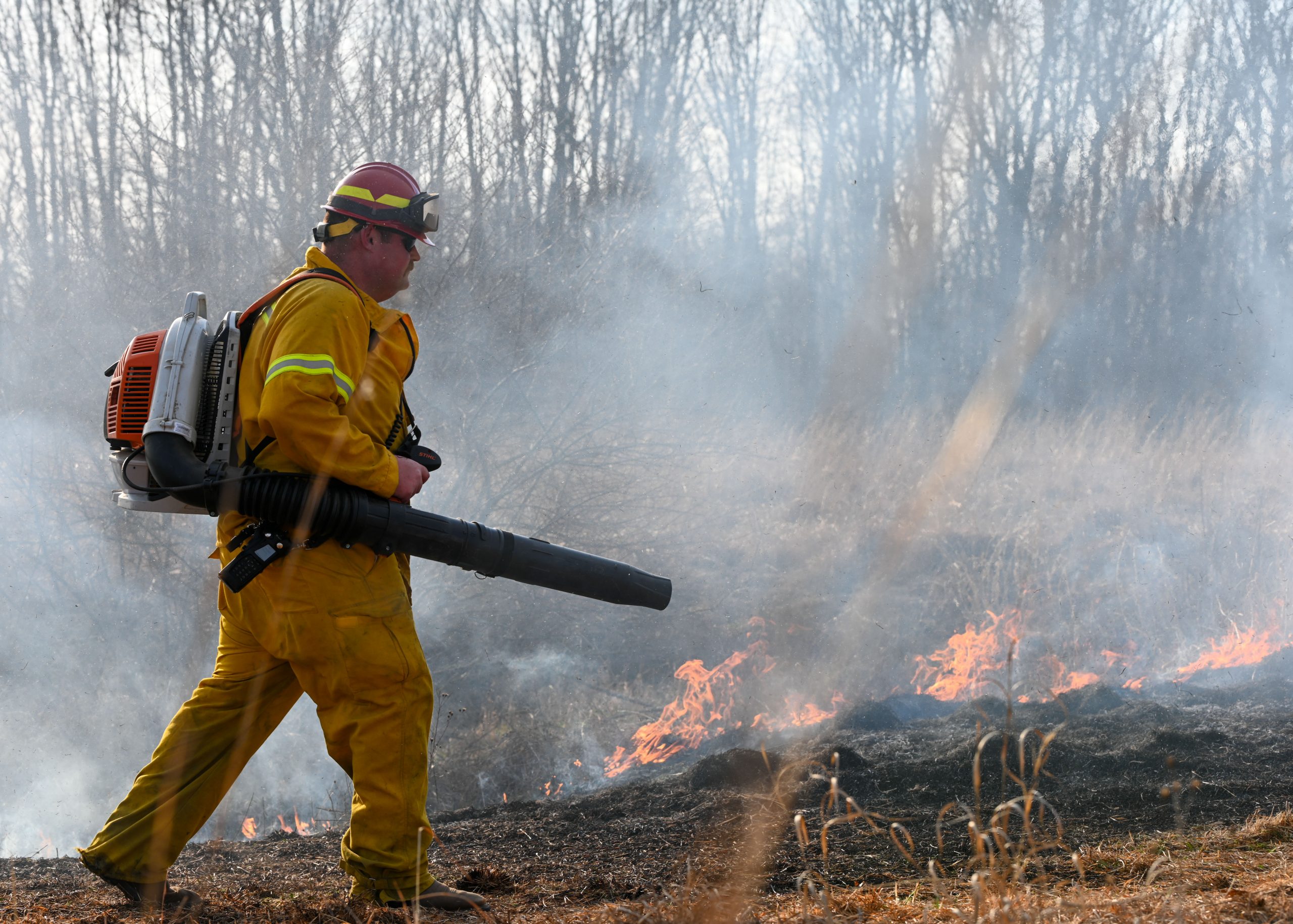
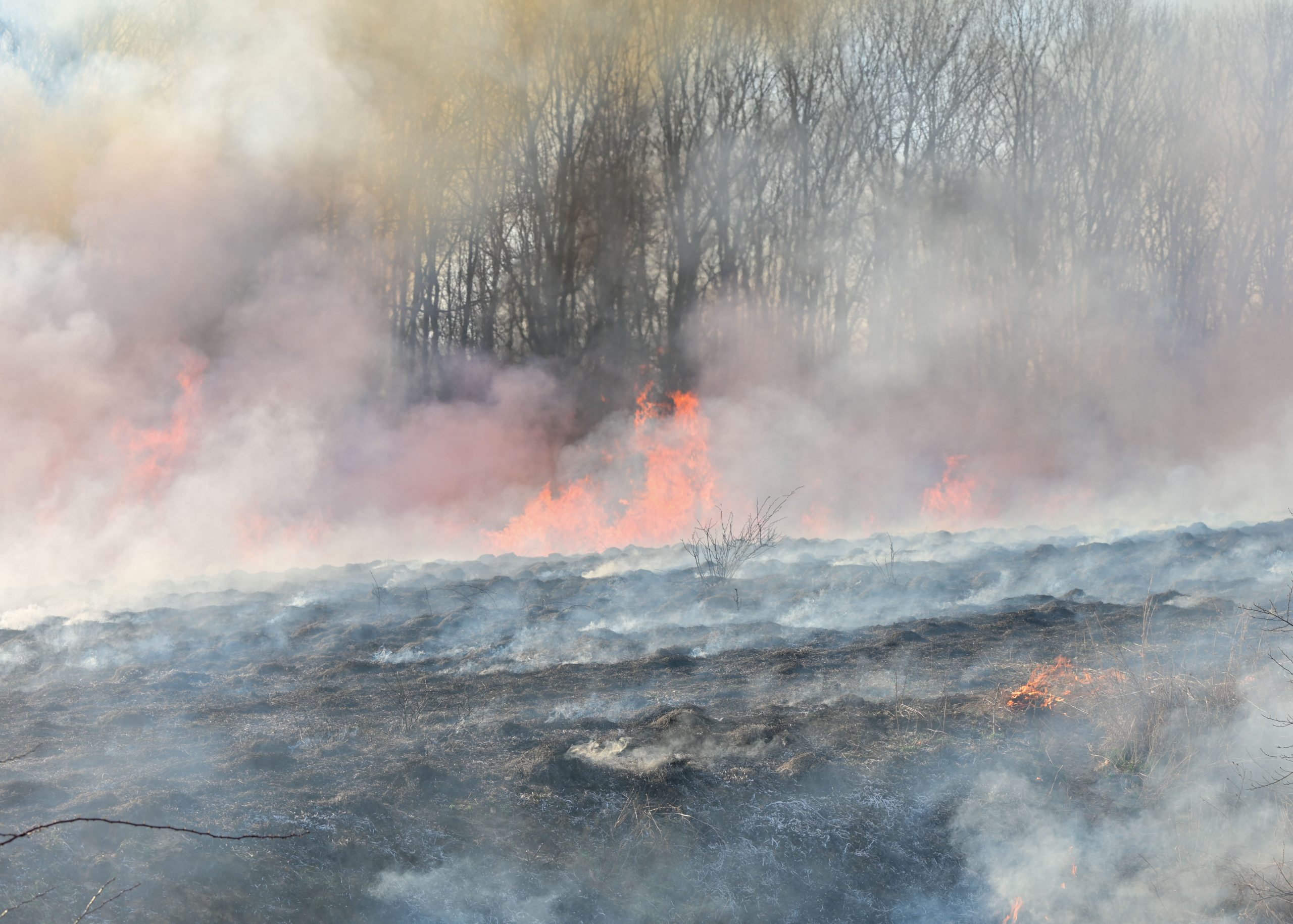
Following the completion of a prescribed burn, the environmental team conducts post-burn evaluations to assess the effectiveness of the fire in eliminating vegetation encroachments. The team inspects the property to gauge the success of the burn and monitor the wildlife and any significant changes to the ecosystem.
Through careful planning, collaboration, and respect for traditional knowledge, the NHBP Environmental Department and the Athens Fire Department have demonstrated the profound benefits of prescribed burns. This project serves as a beacon for future efforts, proving that with the right approach, fire can be a powerful ally in the quest to preserve and restore our natural landscapes.
Looking ahead, the next scheduled burn is set for the spring of 2025, during which different sections will be strategically targeted for management. This rotation ensures a comprehensive approach to maintaining the health and biodiversity of the area.
To view the photo gallery, click HERE.

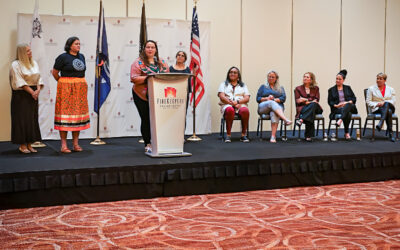


0 Comments